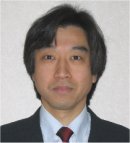|
Plenary Lecture
Dimethyl Ether (DME): A Clean Fuel of the 21st Century and Catalysts for It

Assistant Professor Kaoru Takeishi
Department of Materials Science and Chemical Engineering,
Faculty of Engineering
Shizuoka University
Japan
E-mail: tcktake@ipc.shizuoka.ac.jp
Abstract: Dimethyl ether (DME) is the smallest ether, and its chemical
formula is CH3OCH3. DME usually exists as gas, but it is
easy to liquefy by cooling at -25oC at atmospheric pressure and by
pressurizing under 5 atm at room temperature. Therefore, DME is easy to handle
like liquefied petroleum gas (LPG). DME will be used as fuel of substitute of
LPG. In China, DME is mixed into LPG and used as a domestic fuel. Cetane
number of DME is 55-60, so DME will be used as a diesel fuel. In Japan, China,
Sweden and so on, DME buses and trucks are testing on public roads. DME does
not contain poisonous substances, and it burns with no particulate matters
(PM), no sulphur oxides (SOx), and less nitrogen oxides (NOx). Therefore, DME
is expected as a clean fuel of the 21st century. DME is able to replace light
oil and LPG, and its physical properties are similar to those of LPG. It is
possible that DME infrastructures will be settled more rapidly than hydrogen,
because existing LPG infrastructures can be used for DME.
On the other hand, it is expected that fuel cell is one of the methods to
restrain the global green effect. Steam reforming of methane, LPG, gasoline,
and methanol is actively researched and developed as hydrogen supply methods
for the fuel cells. Methanol steam reforming is easy to perform at around
250-300oC. However, the toxicity of methanol is high, and its
infrastructure is not well developed. The infrastructures for natural gas,
LPG, and gasoline are well established, but those steam reforming are
difficult even at high temperatures around 800oC, and they contain
sulphur resulting in catalyst poisoning. DME is expected as excellent hydrogen
carrier and hydrogen storage, because DME will be easy to reform into hydrogen
if there will be excellent catalysts of DME steam reforming. Therefore, I have
been studying on DME steam reforming for hydrogen production, and researching
on catalysts for DME steam reforming and DME synthesis.
The results of steam reforming of DME over several catalysts suggested the
following facts: H2 production with steam reforming of DME consists
of two steps. The first step is hydrolysis of DME into methanol. The second
step is steam reforming of methanol that produces H2 and CO2.
The rate determining step is hydrolysis of DME into methanol. The copper
alumina catalysts prepared by the sol-gel method are excellent for H2
production by steam reforming of DME. The reason is that gamma-Al2O3
for the hydrolysis and Cu for methanol-steam reforming are co-existing closely
on the catalyst surface. The consecutive reactions smoothly occur. Addition of
Zn, Mn, or Fe into Cu(30wt.%)/Al2O3 activates steam
reforming of DME. The Cu-Zn(29-1wt.%)/Al2O3 catalyst
shows the excellent activity of DME steam reforming; the DME conversion is
95%, H2 yield is 95%, and CO concentration was 0.8 mol.%. I have
developed a new catalyst for H2 production from DME, and the
catalyst give us a great potential for H2 supply from DME. Also I
have developed catalysts for direct DME synthesis from syngas (mixture of
hydrogen and carbon monoxide). The catalysts are prepared by the sol-gel
method, and the surface of the catalysts is optimum for direct DME synthesis.
Copper sites for methanol synthesis from syngas,
gamma-Al2O3
sites for dehydration of methanol into DME, and copper sites for water-gas
shift reaction from H2O & CO into H2 & CO2,
are co-existing closely on the catalyst surface. The consecutive reactions
(methanol synthesis, methanol dehydration, and water-gas shift reaction)
smoothly occur, and DME is produced fast. Therefore, these catalysts will be
very effective for new energy system of DME and hydrogen.
Brief biography of the speaker:
Oct 1994 – Present: Assistant Professor, Faculty of Engineering,
Shizuoka University
Mar. 2005: Doctor of Engineering, Tokyo Institute of Technology
Apr. 1989 – Sep. 1994: Assistant Professor, Junior College of
Engineering, Shizuoka University
Apr. 1987 – Mar. 1989: Researcher, Gotemba R&D Laboratory, Dow Chemical
Japan
Apr. 1985 – Mar. 1987: Master Course of Electronic Chemistry, Tokyo
Institute of Technology (Master of Science)
Apr. 1981 – Mar. 1985: Undergraduate Course of Chemistry, Science
University of Tokyo (Bachelor of Science)
My main research field is catalysis chemistry. Now, I have specially been
working for catalyst development for new fuels such as dimethyl ether (DME)
and hydrogen.
|